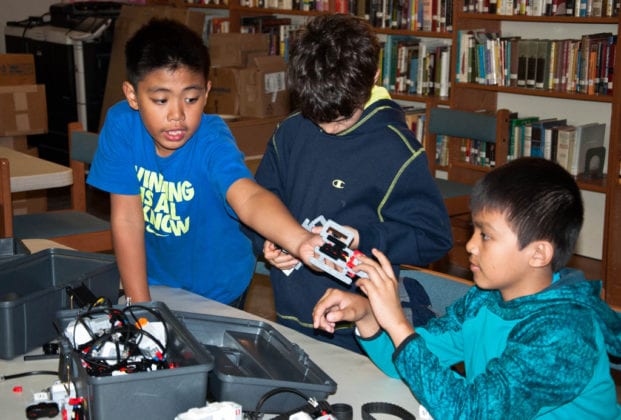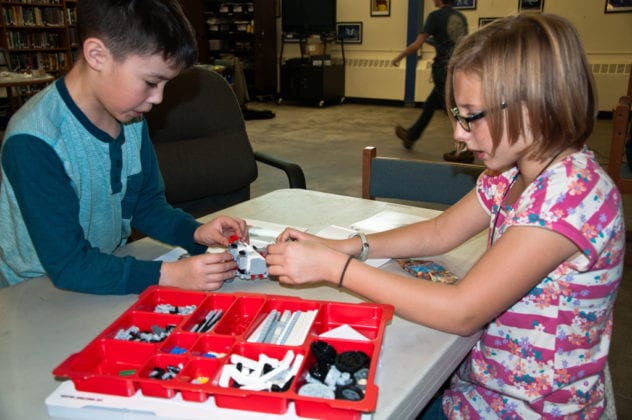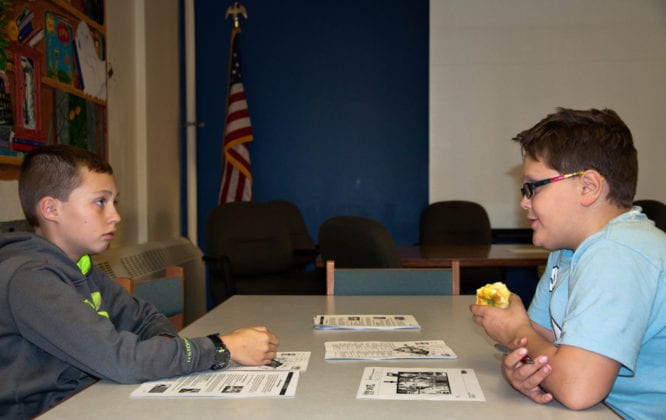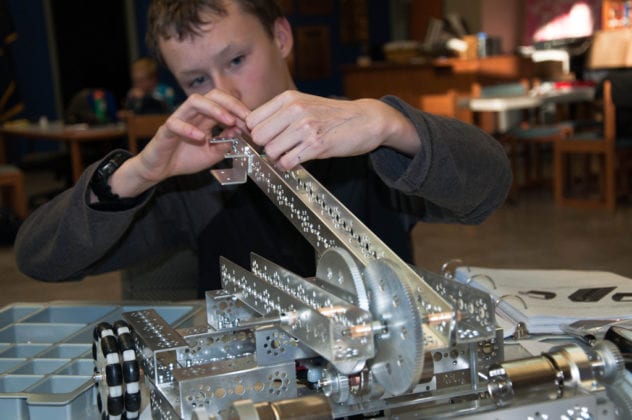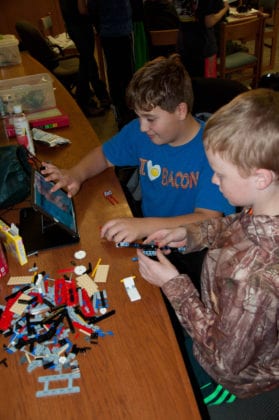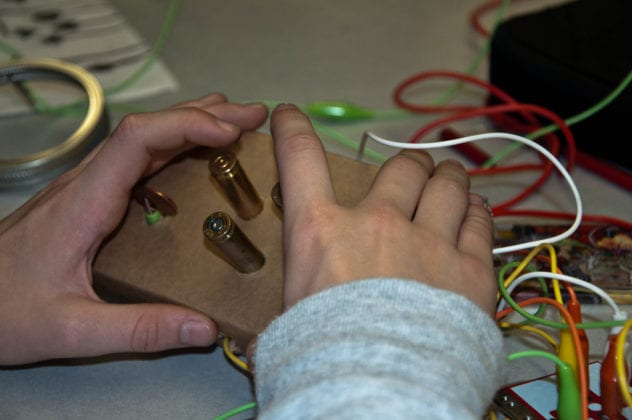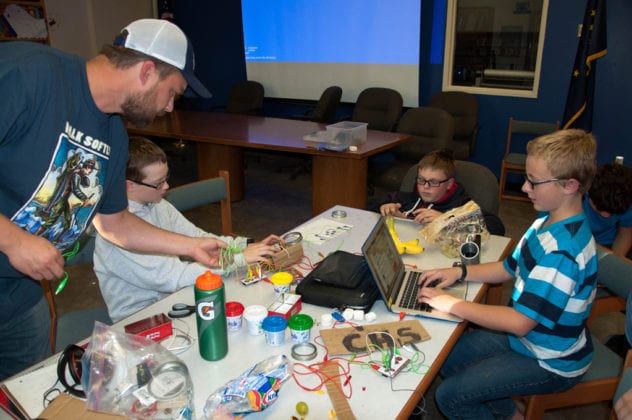Cordova’s youth are a tech savvy bunch — so savvy, in fact, that 12 local high school students, two of which attend homeschool, will be sending a science project to NASA’s International Space Station in the not-too-distant future.
The Advanced Development Technologies computer science elective class at Cordova High School, also known as Space Quest, is an after school program created by Microsoft, NASA, LEGO Education and The Quest Institute for Higher Education.
“The class introduces students to space science — physics,” said Jeremiah Beckett, the CHS Tech Club advisor, “in a combination of robotics, to learn engineering and obtain real-world experience, working on projects as a team.”
Beckett helps set the direction of the three tech clubs and is the primary lead for various club activities.
Part by part and piece by piece, the students will build a science experiment that will go into space.
“Many of us dreamed of going to or sending something to space as kids,” Beckett said. “Our kids actually have that chance.”
As part of the program, the students received a replica of a kit that when built will be sent to the space station. The science project has a series of sensors for capturing data around temperature, humidity, light and additional data.
“Our space experiment will be a formal project, defined and managed by the students,” Beckett said. “They build the replica engineering kit and work together to build an experiment that can be done in outer space. The kit utilizes LEGO Mindstorm Robotics as the core development platform.”
At the space station, the project’s program will run at set intervals. The data collected is sent to a satellite. Next, a cloud service consolidates the information for student analysis and reporting.
“The students will be able to compile the information,” Beckett said, “And draw conclusions from the experiment, to be applied for the benefit of all mankind.”
The space club’s science experiment is due in December.
“Optimistically, at that point it will be sent into space, and return data before the end of the school year,” Beckett said. “The kids will have the opportunity to talk to NASA engineers and send a packet of CHS mementos to outer space. We’ve got a great group of kids participating and having a lot of fun learning about space science.”
Throughout the program, students will work as a group to learn about NASA’s International Space Station, building experiments for space, working with computers and robotics, teamwork and collaboration, and solving real world challenges.
Space Quest is an exclusive program with only 13 schools participating nationwide.
Normally, Beckett said, this type of endeavor is reserved for large research and development firms, big businesses and government agencies.
“The students who are involved are part of a very special group of kids who get to design and build something that goes into space,” Beckett said. “We plan to do a community showcase at the end of the year to introduce our project and experiment.”
Tech Club isn’t just for high schoolers
Students in fourth grade and all the way up to seniors in high school are involved in three different Science Technology Engineering Art and Math (STEAM) clubs this year: CHS Tech Club, for 7-12 grades; For Inspiration & Recognition of Science & Technology (FIRST)/First LEGO League Robotics Tech Club, for 4-12 grades; and the Advanced Development Technologies computer science elective/Space Quest Club, for 9-12 grades.
These tech clubs provide students with a fun and structured learning environment which cultivates interest, hands-on exposure and continual learning with computer science technology.
It also emphasizes skills with critical thinking, creativity and collaboration.
“The clubs help students work in an engaging atmosphere,” Beckett said, “and to go beyond use – to envisioning, creating and making technology. We cover a broad range of topics from computer programming, robotics, electronics, multimedia and emerging/historical technological advances.”
Originally, Beckett envisioned expanding tech club to an international program for engineering and robotics provided by FIRST and LEGO Education.
“This is a well-established program that provides students annual challenges,” Beckett said, “With an opportunity for state competitions, working in team environments, problem solving, coding, engineering and robotics. The programs cultivate key STEAM skills for kids, as well as providing scholarship opportunities for older students.”
The platform provides Cordova’s students with mature engineering and robotics programs they can participate in from grade school through high school.
“Additionally, tech club cultivates critical interpersonal, project and problem solving skills,” Beckett said, “That they’ll use in their lives regardless of post-school paths.”
Beckett said his background in computers and having fun being involved in other youth programs has allowed him to help provide kids with more opportunities, hopefully building a foundation for long-term computer science and STEAM learning.
“Honestly, I wanted to ensure my kids, and other like-minded students, have the opportunity to explore technology and how to create it before they go to college,” Beckett said. “When I was a student at CHS at the emergence of the internet, my dad taught a computer class. In the ’90s we got to develop a computer game.”
Beckett said he was saddened to return to Cordova a few years ago to find that 20 years later, what was being taught to local students wasn’t realizing students’ full potential.
“While the schools have great technology available to students,” Beckett said, “We were only enabling users and not cultivating creators or makers. I realize we’re a small town and it’s hard to have expansive class options in our school. Almost all career paths today rely on technology – it’s at the foundation of everything we do. I think ensuring our students can understand, work with, create and make technology, is key to giving them the best opportunities possible.”
Beckett is not alone in his quest to bring these technology skills to local youth and he said he works with some outstanding Tech Club volunteers.
Jared Niles is the co-advisor for the Space Quest elective; FIRST robotics assistant coaches are Doug Carroll, junior high; Wendy Ranney, sixth grade; and Bryan Mills, fourth-fifth grade.
“We also have parents attending periodically and working with the kids, which is great,” Beckett said.
Sponsors include NASA, Microsoft, LEGO Education, the Quest Institute for Quality Education, FIRST in Alaska/FIRST LEGO League, the Cordova School District, Cordova Telephone Cooperative, Cordova Wireless, Cordova Electric Cooperative, the Native Village of Eyak, Nichols’, Redden Net, ACE Hardware, TrueValue Hardware, GCI, Orca Adventure Lodge, Wilson Construction, Knot Crazy, Shoreside Petroleum, Laura’s, Cordova Outboard and Marine, Shags Hair Studio, Camtu Center, Harborside Pizza, Tiedeman Construction, F/V Copper Star, the City of Cordova and residents.
“We appreciate the community’s support,” Beckett said. “I want to thank the Cordova School District and staff, our sponsors and community for helping create more technological opportunities for our kids. I enjoy donating all my time to help the next generation of makers and am pleased to see the school and community expanding their support. We welcome any additional sponsors or volunteers who would like to support the club.”
Currently, the tech clubs have 41 participants who attend Cordova Public Schools and/or are homeschooled.
For more information visit the Tech Club online at https://sites.google.com/a/cordovasd.org/tech-club/ and FIRST LEGO League and FIRST Robotics at www.firstinspires.org. Visit NASA’s International Space Station here: https://www.nasa.gov/mission_pages/station/main/index.html.
